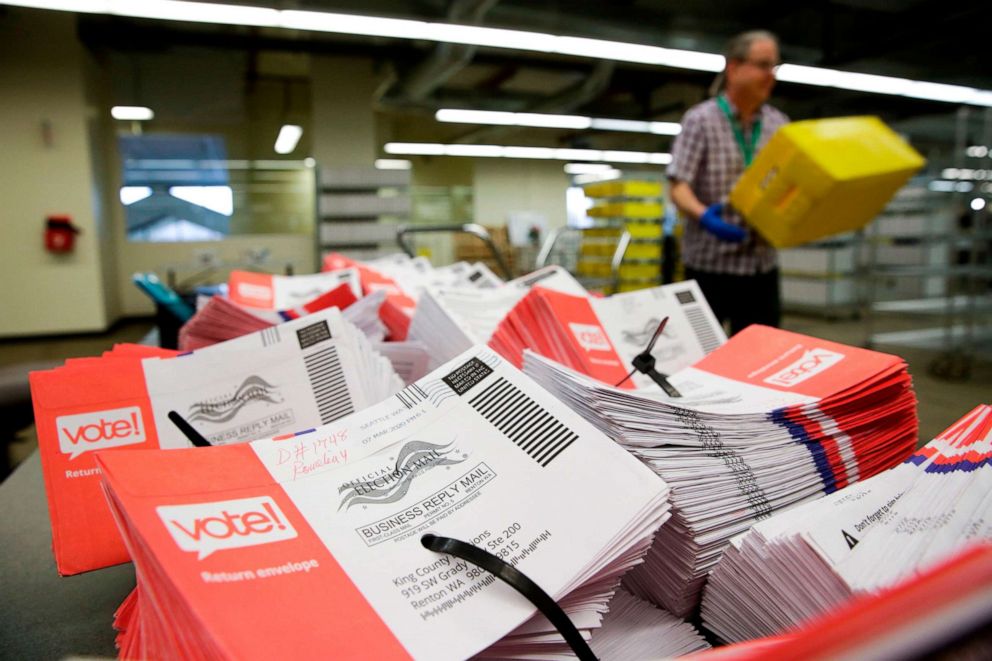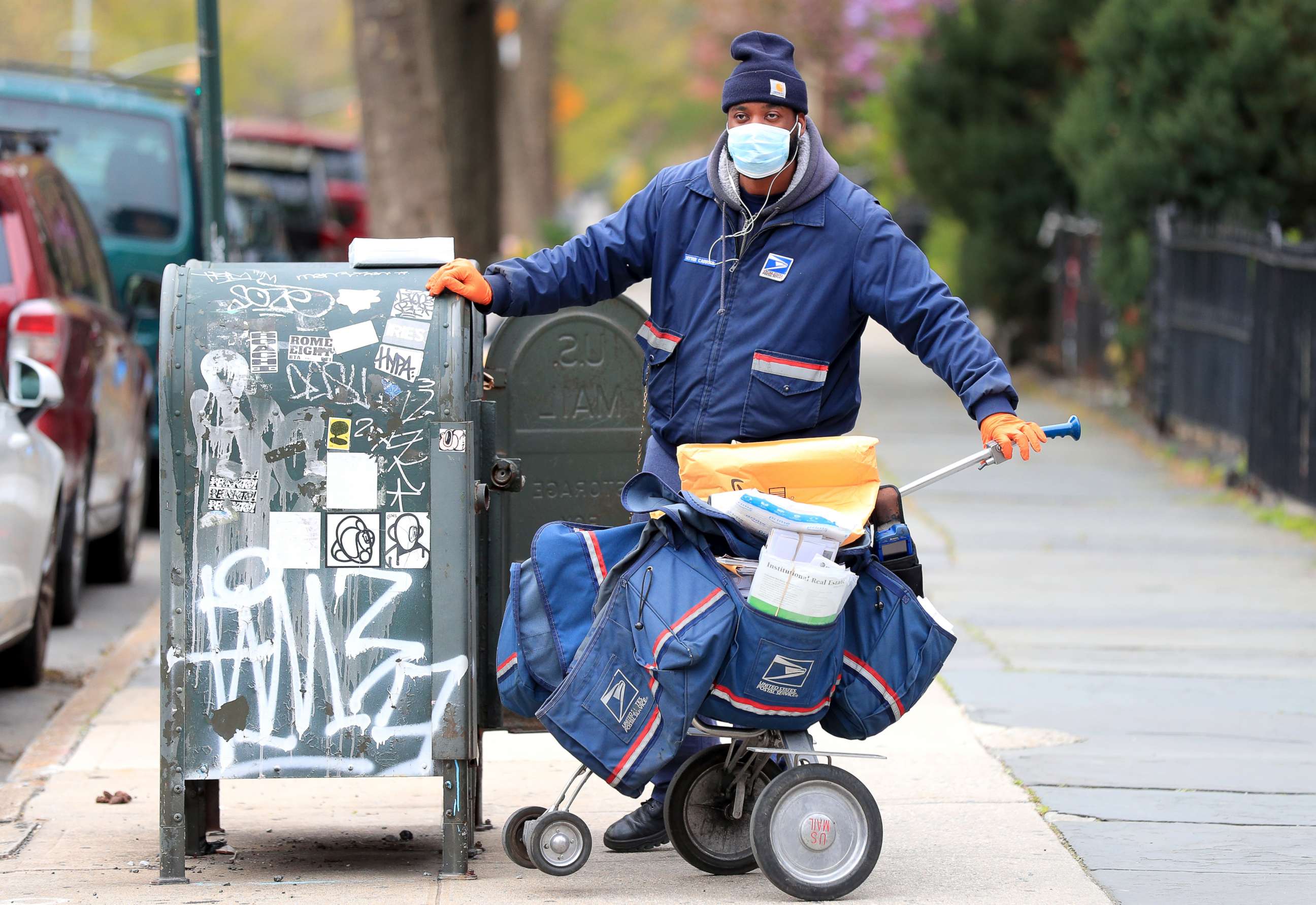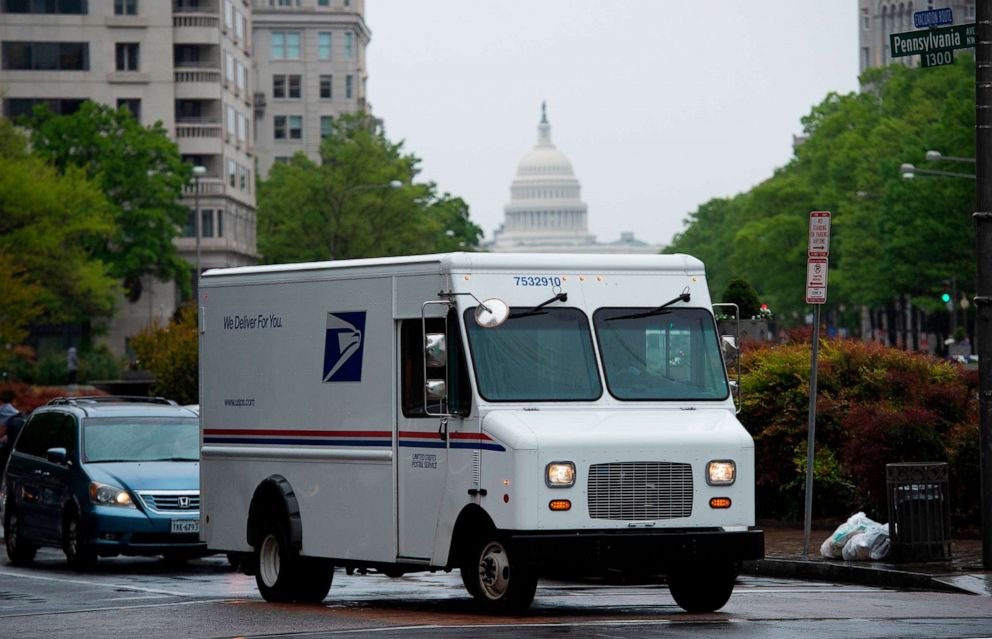Partisan battle erupts over US Postal Service as some look to mail-in ballots amid pandemic
Support for mail-in voting has tended to fall along partisan lines.
As some lawmakers have begun to advocate for the use of mail-in ballots as a means of safeguarding voters amid the coronavirus pandemic during the upcoming 2020 elections, a partisan battle has erupted in Washington over the future of the crippled U.S. Postal Service.
Lawmakers were already facing challenging decisions about how to rescue the troubled agency, which is on the brink of insolvency in the midst of the global health crisis, but the ongoing debate over mail-in ballots has added a political dimension to an already complex problem.
The stakes could not be higher. Rep. Gerry Connolly, a Democrat from Virginia who chairs the House subcommittee that oversees the U.S. Postal Service, told ABC News that if Congress does not approve more money for the agency, efforts to implement a nationwide vote-by-mail measure could be in jeopardy.
“The whole point of this is to make it safe and effective, and I believe the post office is well equipped to do both,” Connolly said. “But it has to get an infusion of capital to ensure that that mission is smooth and uninterrupted.”

Support for mail-in voting has tended to fall along partisan lines -- with Democrats tending to support it, and Republicans opposing it. Democrats say it will increase turnout by providing voters a safe way to cast their ballots. Republicans say it leaves the election vulnerable to voter fraud.
Party leaders have been making their case to the public.
Earlier this month, President Donald Trump urged Republicans to “fight very hard” to stop mail-in voting.
“Democrats are clamoring for it,” Trump tweeted on April 8. “Tremendous potential for voter fraud, and for whatever reason, doesn’t work out well for Republicans.”
On Monday, however, Speaker of the House Nancy Pelosi, the legislature’s top Democrat, announced on MSNBC that she would seek to include language creating a national vote-by-mail program in any upcoming coronavirus legislation, calling it “a health issue.”

But the U.S. Postal Service is facing a major shortfall that could complicate its efforts to distribute millions of mail-in ballots if such an effort were to be successful.
In a digital briefing before the House Oversight Committee earlier this month, Postmaster General Megan Brennan told lawmakers that the agency would "run out of cash" by the end of the fiscal year without help from Congress and the administration, in part due to extreme revenue losses being suffered as a result of COVID-19.
According to the National Conference of State Legislators, vote-by-mail is the default method of voting in only five states – Colorado, Hawaii, Oregon, Washington and Utah.
In most states, those wishing to vote by mail must request a mail-in ballot. In 16 states, voters can only request an absentee ballot if they have a valid excuse, and it remains unclear whether the desire to practice social distancing amid the pandemic is an acceptable reason to request a mail-in ballot.
According to David Kimball, a political science professor at the University of Missouri St. Louis, who focuses on election administration, any effort to increase voting by mail would present significant logistical challenges that could place added strain on the U.S. Postal Service.
“Congress would have to provide some income to the postal service,” Kimball said, “to help make sure they can handle this increased volume of mail they’re going to get through their absentee ballot request and then returning the ballots,”
Connolly agreed that vote-by-mail legislation would need to include support for the U.S. Postal Service.
“The two will go hand in glove,” Connolly said.

Lawmakers initially agreed on a grant to the U.S. Postal Service as part of the $2 trillion stimulus package passed in March. But that grant was struck from the final legislation due to opposition from the Trump administration, The Washington Post reported, and replaced by language that allows the Department of Treasury to issue a $10 billion loan to the agency instead.
That $10 billion loan has yet to be approved, and Trump said on Friday that he would not allow the Treasury Department to do so until the U.S. Postal Service quadruples the rate it charges for packages, a move that would force online vendors -- like Amazon, one of Trump’s frequent political targets – to pay more for shipping.
Critics of Trump's proposed rate hike have argued that raising prices so significantly would be counterproductive, making the U.S. Postal Service more expensive than its competitors and leading to an even sharper decline in the revenue as vendors seek cheaper alternatives.
Still, Trump tweeted on Friday that he would "never let our post office fail.”
“It has been mismanaged for years, especially since the advent of the internet and modern-day technology," Trump wrote on Twitter. “The people that work there are great, and we’re going to keep them happy, healthy, and well!”
What to know about coronavirus:
- How it started and how to protect yourself: coronavirus explained
- What to do if you have symptoms: coronavirus symptoms
- Tracking the spread in the US and Worldwide: coronavirus map
Tune into ABC at 1 p.m. ET and ABC News Live at 4 p.m. ET every weekday for special coverage of the novel coronavirus with the full ABC News team, including the latest news, context and analysis.




